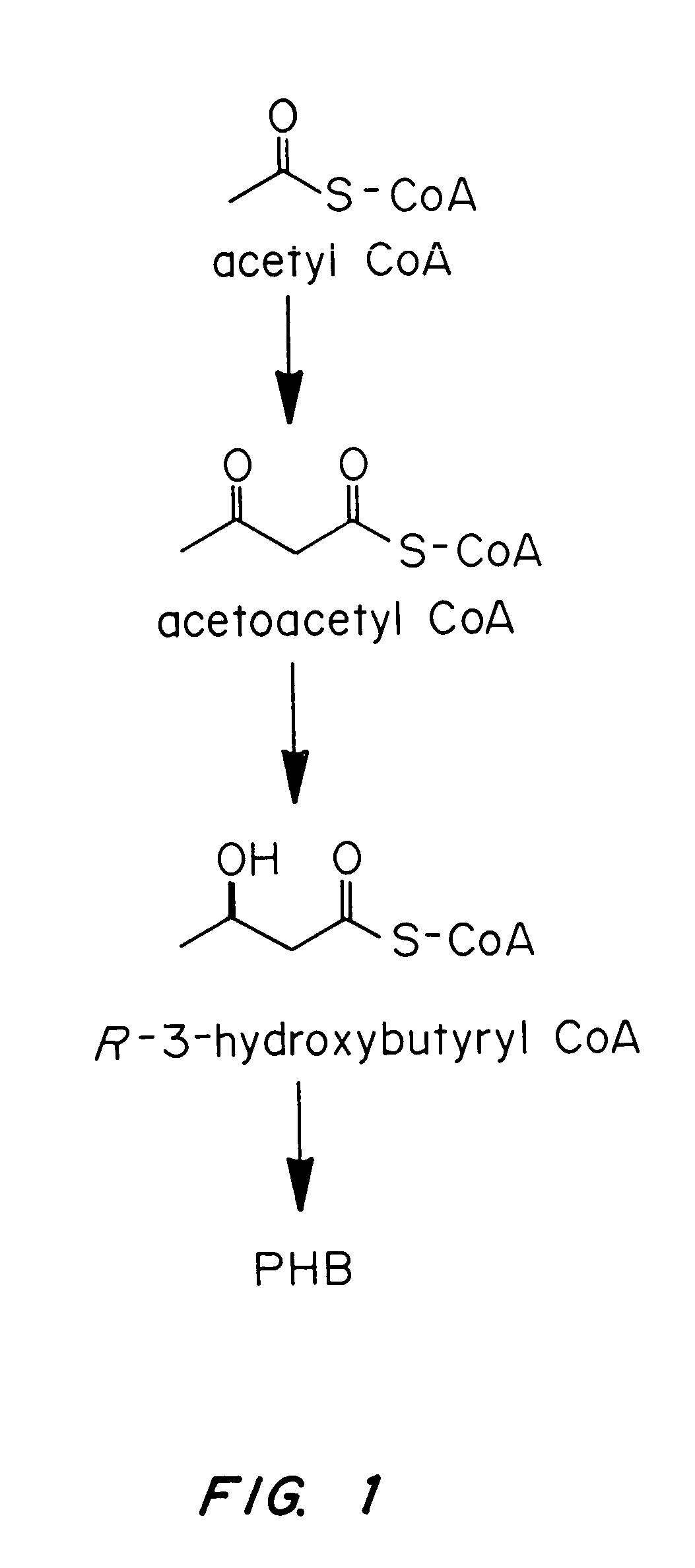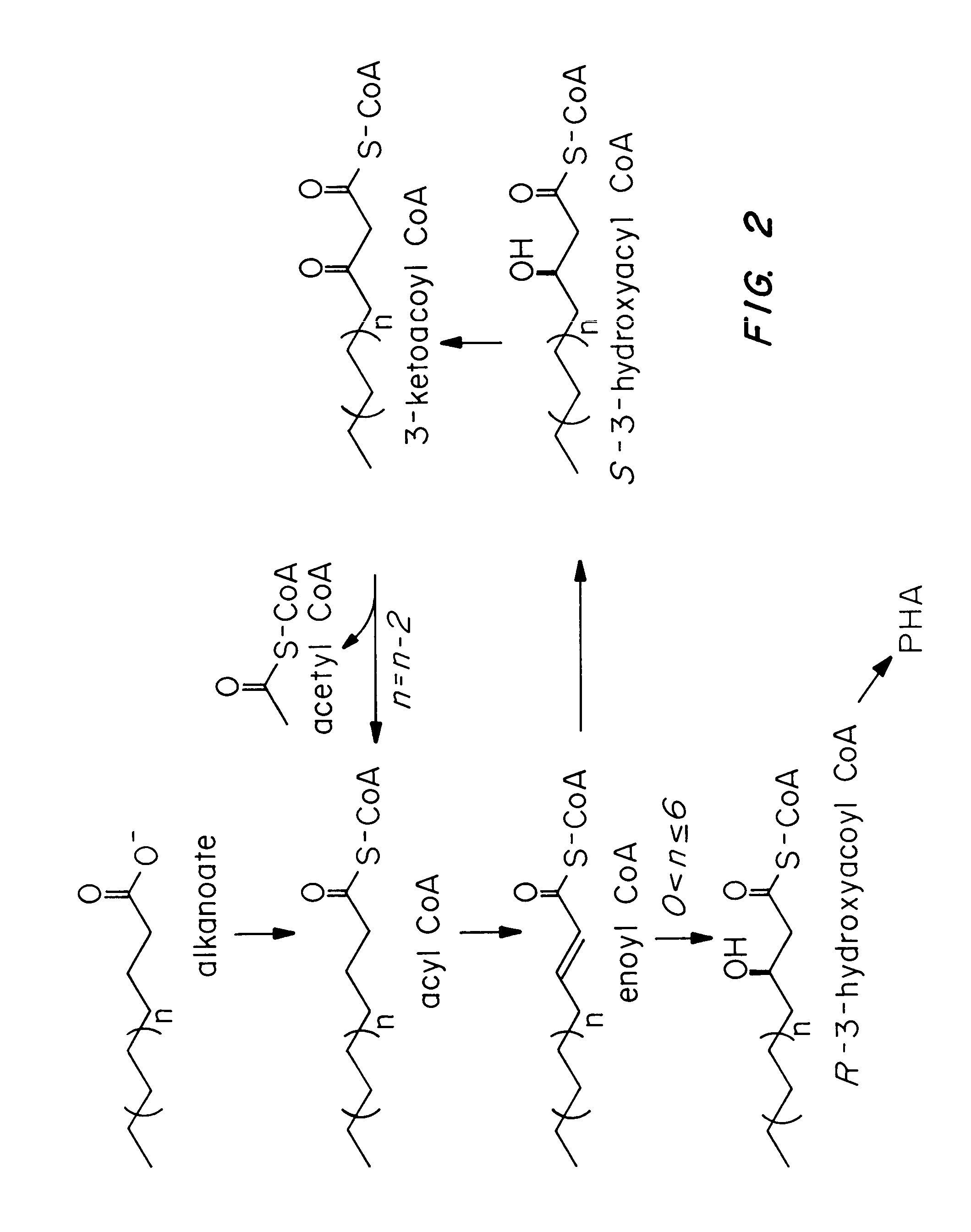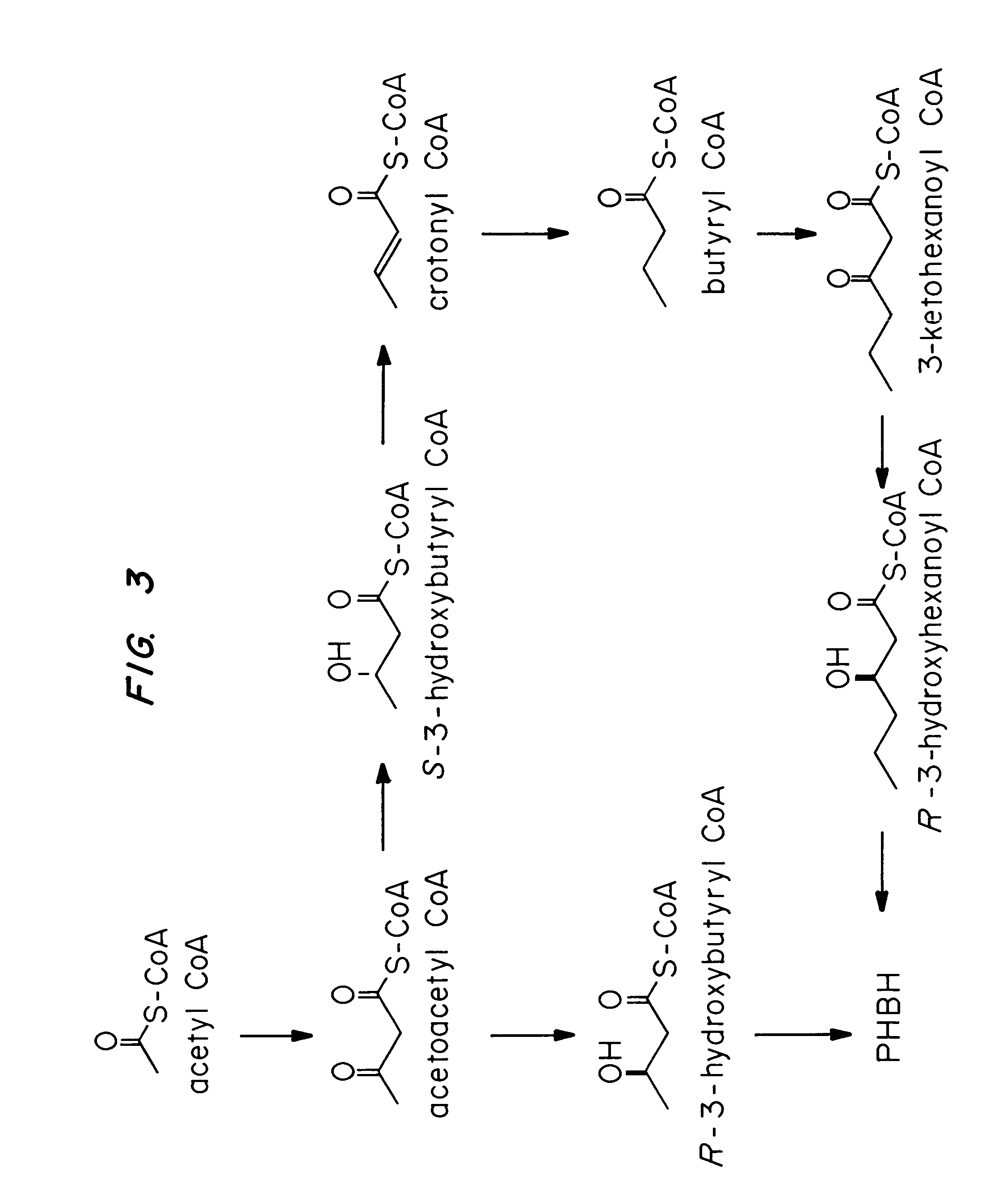Transgenic systems for the manufacture of poly (3-hydroxy-butyrate-co-3-hydroxyhexanoate)
a technology of polyhydroxybutyrate and hexanoate, which is applied in the field of polyhydroxyalkanoate materials, can solve the problems of inefficient biological systems for the production of phas containing 3-hydroxy-co-hydroxyhexanoate (3h-co-hh), limited commercial availability of phas so as to improve transcriptional and translational signals, efficient pha synthesis, and high expression levels
- Summary
- Abstract
- Description
- Claims
- Application Information
AI Technical Summary
Benefits of technology
Problems solved by technology
Method used
Image
Examples
example 1
Isolation of Genes from N. salmonicolor Suitable for Improving the Production of PHBH
[0068]Transgenic E. coli strains that express a chromosomally encoded PHA polymerase from N. salmonicolor were constructed. The PHB polymerase gene from N. salmonicolor was isolated and a fusion of this gene was generated with the translational sequences of the PHA polymerase gene from Z. ramigera, which includes the N-terminal 10 residues of the Pseudomonas enzyme. A promoterless chloramphenicol transferase gene was then placed behind the hybrid phbC gene to make phbC-cat fusion. This fusion was randomly inserted into the E. coli chromosome using the pLOF or pUT system (Herrero et al., J.Bacteriol., 1990: 172(11):6557-6567) and clones expressing the fusion were selected on chloramphenicol-containing growth medium. Expression of the fusion was consequently increased by selecting derivatives that are resistant to higher chloramphenicol levels.
[0069]PhaC was amplified from N. salmonicolor chromosomal ...
example 2
PHBH Synthesis in E. coli from Butyrate
[0081]Endogenous synthesis of R-3-hydroxyhexanoyl CoA can proceed after condensation of butyryl CoA with acetyl CoA followed by a reductive step. This pathway requires only a broad substrate range reductase and a polymerase that accepts 3-hydroxyhexanoyl CoA. Butyrate is taken up by E. coli and converted to butyryl CoA by the atoDA gene products. Degradation of butyryl CoA is dependent on atoB and the fad regulon which is not induced by butyrate.
[0082]Plasmid pMBXc12J12 was constructed by inserting the 2.4 Kb ApoI fragment containing the A. caviae PHA synthase gene (phaC) (Fukui & Doi, J. Bacteriol. 179: 4821-30 (1997)) into the EcoRI site of pUC18. Plasmid pSUI8-AB1 contains the R. eutropha phbAB genes under the control of an IPTG-inducible promoter in the vector pSU18 (Martinez et. al., Gene 66: 1659-20 (1988)). PHBH was produced from glucose and butyrate in E. coli MBX1325(identical to strain DC679, mel, fadR, atoC (con) adhC81 (Clark & Rod,...
example 3
PHBH Synthesis in E. coli Using the Butyrate Fermentation Pathway
[0083]The butyrate fermentation pathway is shown in FIG. 3. Enzymes required for 3-hydroxyhexanoate synthesis are encoded by phbAx, hbd, crt, bdh, phbAy, phbB and phbC, in which x and y indicate identical or different thiolases. The sources for these genes are Z. ramigera (phbAxy), C. acetobutylicum (hbd, crt, bdh) and N. salmonicolor (phbB and phbC).
[0084]Crt and hbd were isolated by polymerase chain reaction using pC10 (Boynton et al) as template using the following primers:
5′ crt: (SEQ ID NO:7)
[0085]5′ GGGGATCCGAATTCAGGAGGTTTTTATGGAACTAAACAA TGTCATCC;
3′ crt: (SEQ ID NO:8)
[0086]5′ GGAATTCGAGCTCCTATCTATTTTTGAAGCC;
5′ hbd: (SEQ ID NO:9)
[0087]5′ GGAATTCGGTACCAGGAGGTTTTTATGAAAAAGGTATGT GTTATAGG;
3′ hbd: (SEQ ID NO:10)
[0088]5′ GGAATTCCCCGGGTTATTTTGAATAATCGTAGAAACC.
PCR products were purified, digested with EcoRI / SacI (crt) or KpnI / SmaI (hbd), and subsequently cloned in the corresponding sites of pUC18-Sfi, resulting in pMSXc...
PUM
| Property | Measurement | Unit |
|---|---|---|
| Acidity | aaaaa | aaaaa |
Abstract
Description
Claims
Application Information
 Login to View More
Login to View More - R&D
- Intellectual Property
- Life Sciences
- Materials
- Tech Scout
- Unparalleled Data Quality
- Higher Quality Content
- 60% Fewer Hallucinations
Browse by: Latest US Patents, China's latest patents, Technical Efficacy Thesaurus, Application Domain, Technology Topic, Popular Technical Reports.
© 2025 PatSnap. All rights reserved.Legal|Privacy policy|Modern Slavery Act Transparency Statement|Sitemap|About US| Contact US: help@patsnap.com



